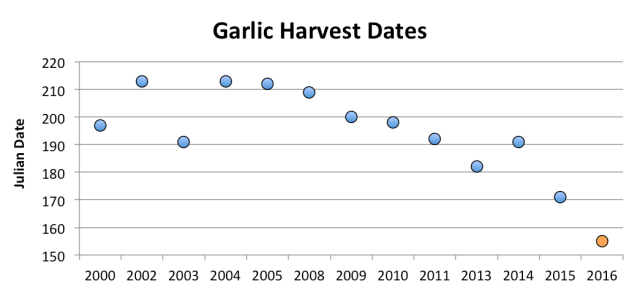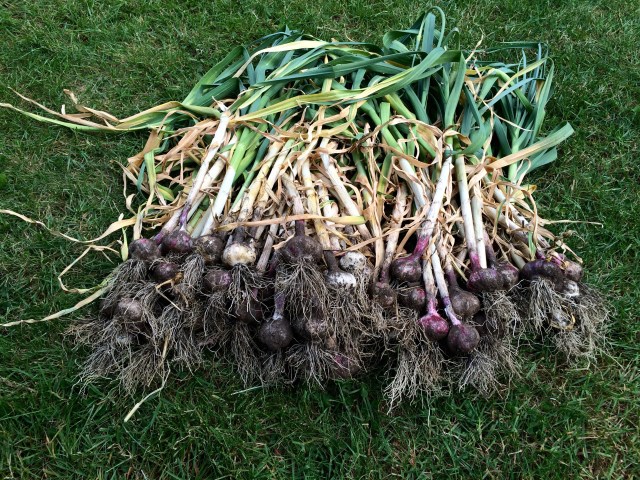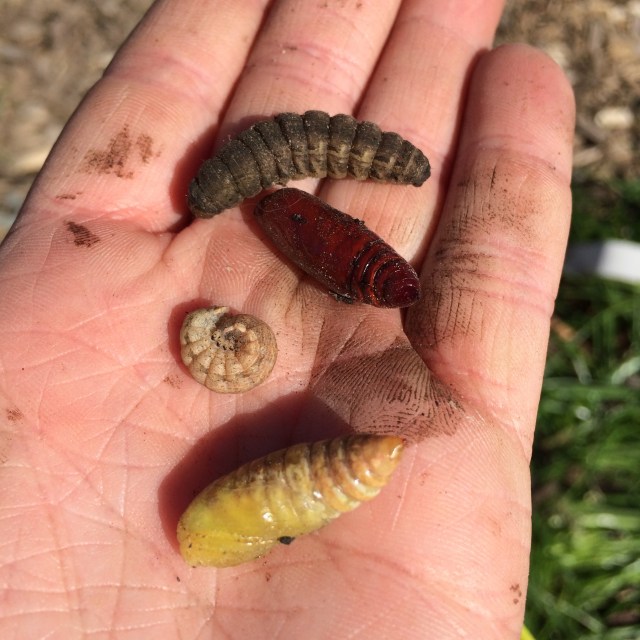
Top bars showing wax attachments and propolis (red)
In November, we harvested the full honey combs from the hive that died of exposure during a bad fall storm. It was our first experience extracting honey – and from a top bar hive at that. In all, we crushed and jarred 3 1/2 quarts of honey.
I may not have reported the disappointing news that – for whatever reason – our feral hive also died before winter was through. This meant we had one hive full of honey and the other with a number of partial combs.
This April, in preparation for swarms (which did not arrive) and purchased bees (which I did not collect), I cleaned out both hives. It was several days of intense labor, including cutting the combs from the top bars, breaking off and sorting empty comb and broody comb, then the actual honey extraction.
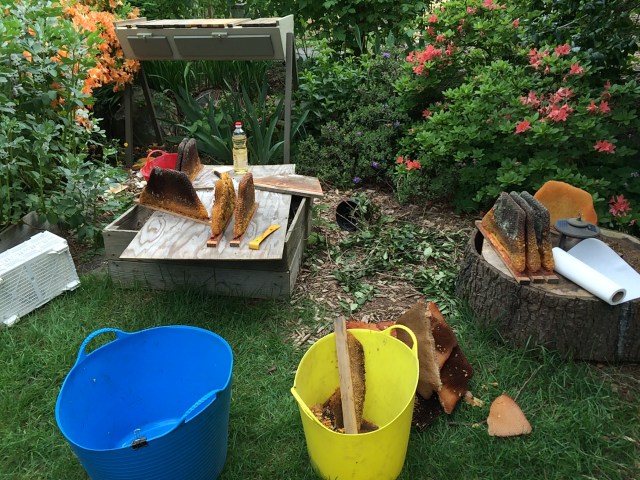
Combs from the top bar hive in various stages of dismantle
For cutting and sorting comb, I had a huge number of bins and bowls on hand. Empty comb went into one bin for later melting. Broody comb or mixed brood-honey comb went into another bin for what-the-heck-exactly-will-I-do-with-this-mess. And honey comb went into all of the large bowls I own and then those neighbour Alicia brought over after I had run out.
To be clear – if you are not familiar with honeybees, most combs are not one type or another. Rather, combs of mostly brood start with honey (with which they nurse the young bees), honey and pollen can be on the same comb, and empty comb can be empty of honey or of emerged beelets, or partially full of either. So the cutting and sorting also involved a lot of breaking of the comb to sort these sub-types.
At some point late in the day, my forearms failing from holding the bars at just the right angle to cut off the heavy honey-rich comb, I invited Alicia and her twin girls over to check out the process. I’m glad I did because the girls were very curious and they love honey. They tried honey from different combs, and were brave enough even to chew some whole comb.
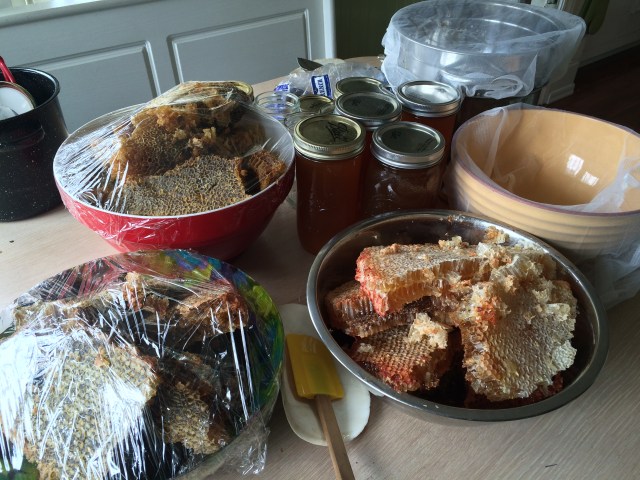
Comb ready for processing
At the end of that long day, I started crushing honey from comb – covering the rest of the heaping bowls with saran wrap. I was able to get two crushes draining at a time – but even then it took days to process all of the honey. What was fun about this crush – besides the sheer volume – were the differences among the honey and the combs. Some honey was a bright clear yellow, other a deep amber. And the combs varied from off-white, sometimes ringed with red propolis, to brittle yellow, to dark iridescent black.
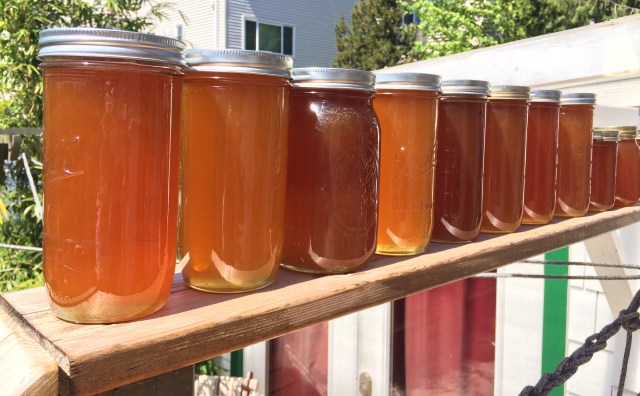
Quarts of variously-coloured honey from the salvage harvest of 2016
It was amazing how much honey those two hives held. The April crushing yielded 11 quarts of honey. Add to that the November crushing and we had nearly 15 quarts of raw honey. After 3 years of keeping honeybees and never harvesting honey, I don’t even feel bad about the loss this winter. We have their sweet memories to tide us through until our next opportunity to keep bees.


